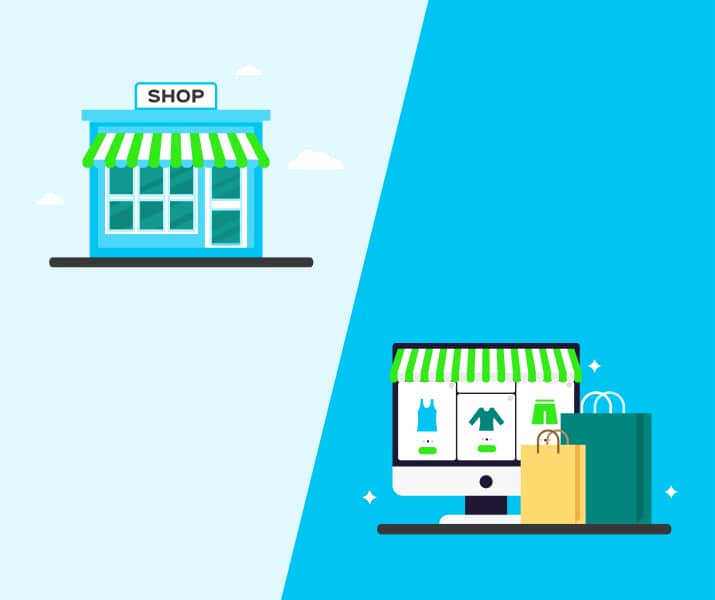There is a continual balancing act between consumer goods manufacturers and their retail partners around the globe: Is it better to sell directly or through retail channels, to build and maintain shopper loyalty?
Two years ago, when supply chain distribution wasn’t an issue, it was a given to ship products to the store, because that’s where the shoppers were. Online sales were secondary for most product categories. But that was then…
After a couple bumpy years, both sides of the industry have had to think about how to deliver on their brand promise when there is more interest and activity in online and mobile shopping. Globally, 85% of consumers shopped online in 20201, and the total share of online commerce outpaced the share of sales across general merchandise stores, including department stores, warehouse clubs and super-centers in 20192.
For most consumer goods brands, the concept of universal availability is a good thing, and part of their brand promise. No one would think a major brand would want to be out of stock—yet some have been holding their inventory to ensure they serve the needs of direct-to-consumer sales. On the other hand, retailers need to fulfill their brand promise with shoppers, despite challenges like limited product availability, brand direct-selling, or branded shopping intermediaries like Instacart, DoorDash or Uber.
Today, there is less certainty in product availability and more options for shoppers to search on items. It is especially important for manufacturers and retailers to focus on building the brand connection, not just the product connection. Here are a few key steps on how to build your brand.
Create strong brand representation at every shelf
Whether it’s in-store displays, printed shelf talkers, collateral pieces, or online digital advertising, promotion, and product pages, there must be strong brand representation to help drive the product sale. This is fairly second nature around large events that encourage celebration, like holidays or major sporting events, but how are you driving brand value at the physical shelf in addition to the virtual one all year long? Creating that brand presence delivers a ‘halo’ effect for all the products in the portfolio.
Highlight your brand’s placement and standing
Shoppers often buy products that they identify with based on their lifestyles or personal beliefs. Whether it’s issues around product sustainability, sourcing, or how products are made, these are all examples of reinforcing your brand’s standing in your consumer’s eyes.
There are also ways to highlight the many different use cases for a brand (recipes for food, as an example, or electronics that are used for social connections as well as business or gaming) to make that consumer connection. By leveraging your brand’s standing, you can create a platform for all your products, that engages and differentiates the brand overall in addition to highlighting benefits, functionality or popularity.
Make sure you are mobile
Mobile commerce has become an integral part of the customer lifecycle. According to recent studies3, more than 40% of total customers engaged with products through a mobile device. Nearly two-thirds of enterprises consider themselves “mobile-first,” with many seeing 50% or more of their sales come through their mobile apps. While you may not need to be mobile-first, you must be mobile-ready. Is your content readily available and accessible on the go?
Test, then monitor your content
While this suggestion may seem more manufacturer-focused, retailers can also benefit. By leveraging Enhanced Content and rich media, a brand can gain more engagement, which leads to better sales – about 30% increase, on average, for consumer goods. And this brand-level content can be used across multiple product lines for efficiency, driving that single message home. Monitoring pricing variants, out of stocks, and winning the buy box are other tools to help maximize your sales performance and reinforce your brand’s value proposition—while keeping track of the competition.
Other third parties are also offering ways to support a brand-first approach. For example, in January, US shopping service Instacart unveiled their new “advertiser solutions” in the hopes of maximizing brand reach. Clearly there are many opportunities!
This is why both manufacturers and retailers should support building the brand, and not just the product, across every outlet and platform that sells. As a manufacturer, you can elevate your brand positioning and create a consistent experience regardless of selling outlet or situation. In similar fashion, if you are a retailer, banners can strengthen your brand value and message to create a unique in-store experience, even when online.
- https://www.statista.com/statistics/1192578/worldwide-share-of-consumers-that-shop-online/
- https://www.cnbc.com/2019/04/02/online-shopping-officially-overtakes-brick-and-mortar-retail-for-the-first-time-ever.html
- https://mytechdecisions.com/latest-news/appsflyer-survey-reveals-majority-of-enterprises-are-mobile-first-as-over-40-of-total-sales-are-now-exclusively-through-mobile-apps/










